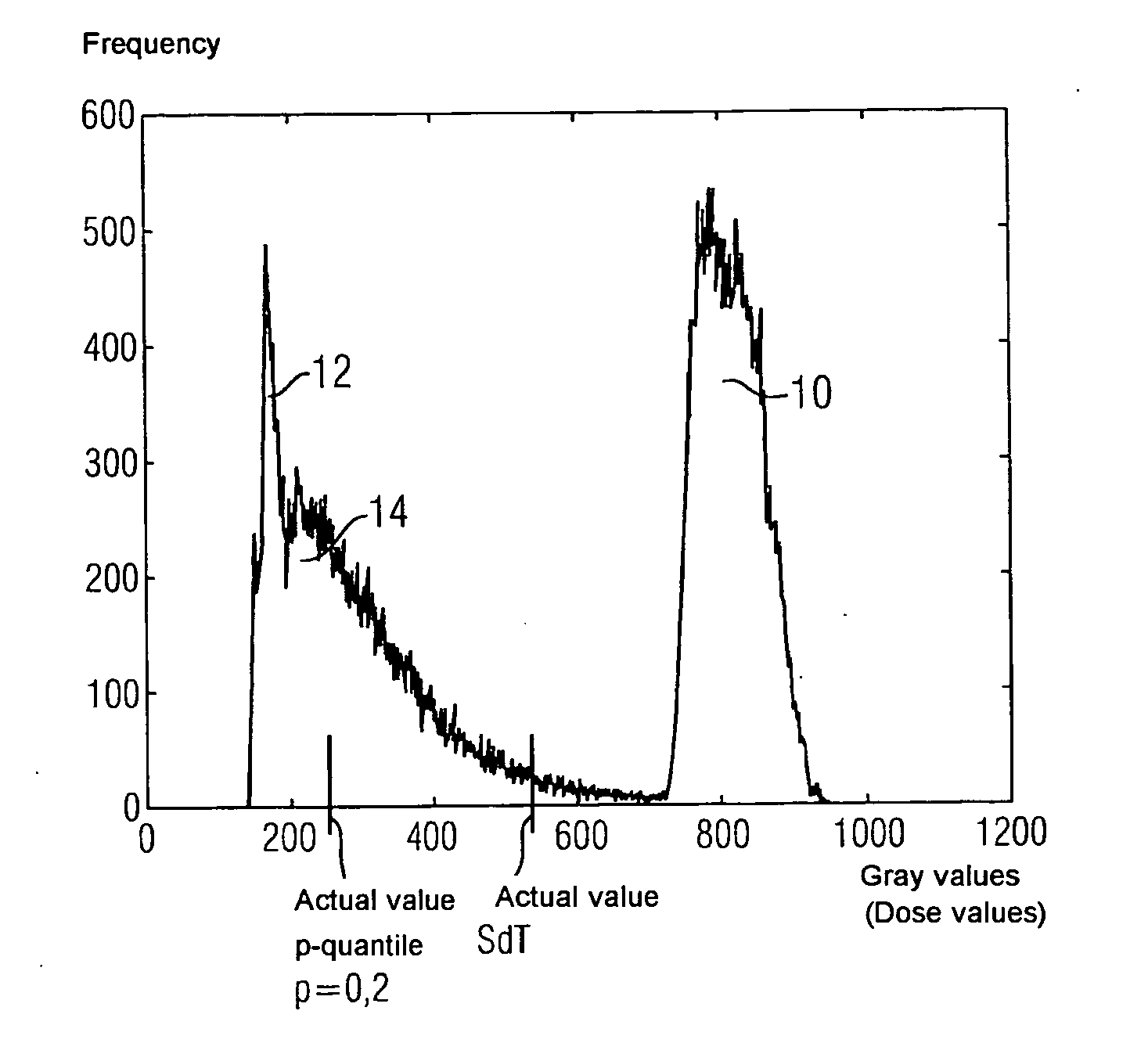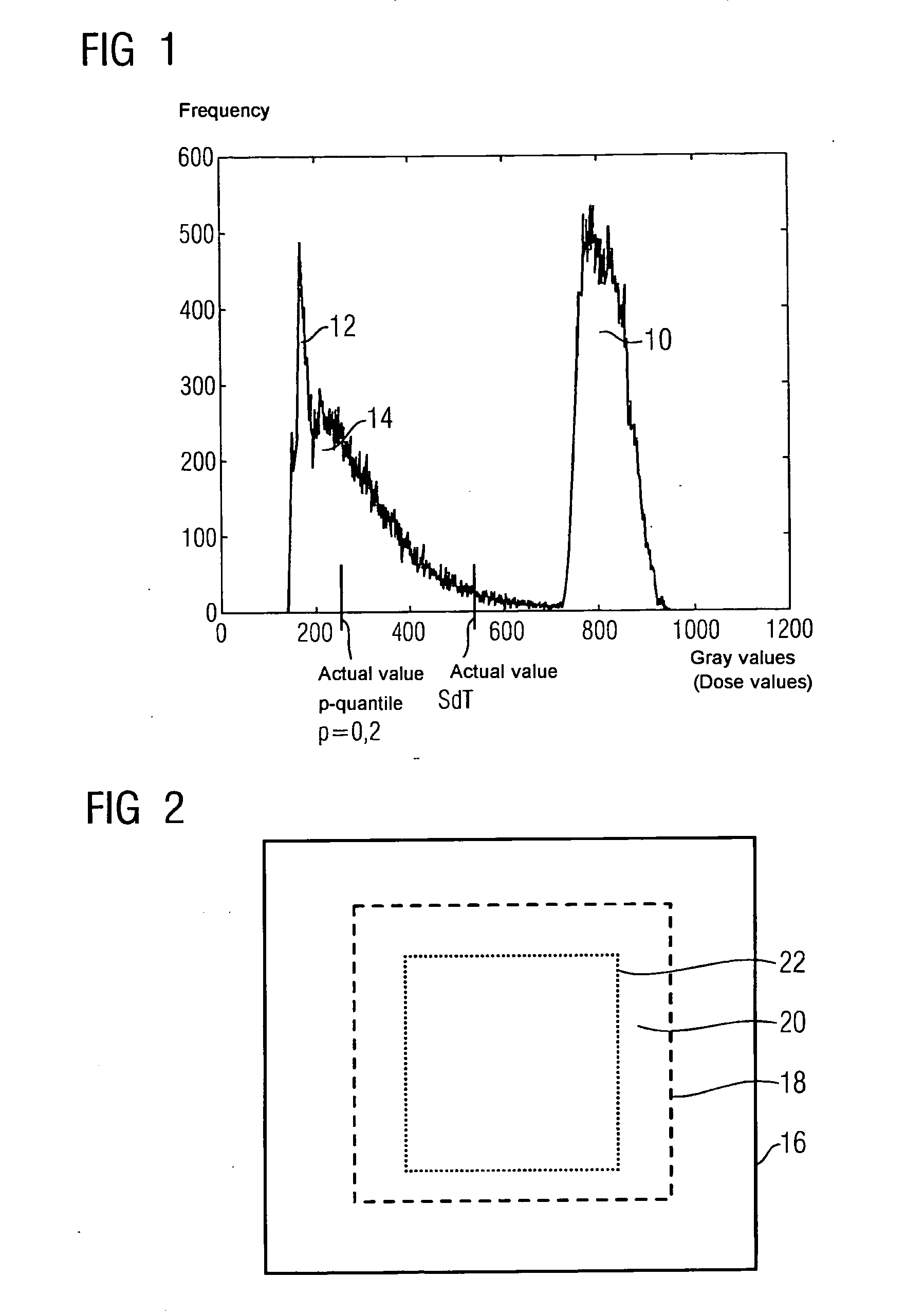Method for controlling the dose or the dose rate when recording x-ray images
- Summary
- Abstract
- Description
- Claims
- Application Information
AI Technical Summary
Benefits of technology
Problems solved by technology
Method used
Image
Examples
Embodiment Construction
[0020]FIG. 1 shows the frequency of specific gray values in an initially recorded x-ray image in a typical situation. The gray values correspond to dose values determined in the image, said dose values having been recorded by the individual pixels (image elements) of the x-ray detector.
[0021] With high dose values, the frequency distribution visibly comprises a first peak 10. This first peak 10 represents the direct radiation, i.e. x-rays, which directly hit the detector without having been absorbed or x-rays which have penetrated extremely weakly absorbent regions of an image object.
[0022] With extremely low dose values, the x-rays comprise a second peak 12. These are dose values which correspond to significantly absorbing regions of the image, bones of a patient for instance, in particular their spinal columns etc.
[0023] If the simple average value is now taken from the data displayed in the frequency distribution as the actual value for the control of the next x-ray recording,...
PUM
 Login to View More
Login to View More Abstract
Description
Claims
Application Information
 Login to View More
Login to View More - R&D Engineer
- R&D Manager
- IP Professional
- Industry Leading Data Capabilities
- Powerful AI technology
- Patent DNA Extraction
Browse by: Latest US Patents, China's latest patents, Technical Efficacy Thesaurus, Application Domain, Technology Topic, Popular Technical Reports.
© 2024 PatSnap. All rights reserved.Legal|Privacy policy|Modern Slavery Act Transparency Statement|Sitemap|About US| Contact US: help@patsnap.com









